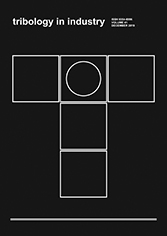Volume 43, No 1, 2021, Pages 83-95
Influence of Hybrid Cooling-Lubricating Strategy in the Turning of ASTM F2063 Austenitic Nickel-Titanium Alloy
Authors:
A.N. Mohd Khalil ![]() ,
A.I. Azmi
,
A.I. Azmi ![]()
![]() ,
M.N. Murad
,
M.N. Murad ![]() ,
,
M.A. Mahboob Ali ![]()
DOI: 10.24874/ti.1005.11.20.02
Received: 16 November 2020
Revised: 20 December 2020
Accepted: 8 February 2021
Published: 15 March 2021
Abstract:
Conventional machining of nickel-titanium shape-memory alloys (NiTi SMAs) faces significant challenges as a result of high thermal and mechanical distortions. The phase transformation temperatures of NiTi SMAs are primarily affected by the rise in temperature during the cutting process, which causes poor machinability under the conventional coolant approach. This research explored the effects of hybrid cooling- lubricating of minimal quantity nano-lubricants with compressible-chilled air generated from a vortex tube during the turning of the NiTi alloys. The experimental procedure involved measurement of induced-cutting force components under variable cutting conditions utilising various coolant approaches. A depth of cut, 0.5 mm with cutting speeds of 12.5, 25, and 50 m/min and feed rates of 0.05 and 0.1 rev/min were utilised. The hybrid cooling approach of minimum quantity nano-lubricants with vortex cooling, can increase tool life for most of the tested conditions and has a considerable influence in reducing the induced-cutting force. In contrast, only marginal improvement was observed for the surface roughness when using the same coolant-lubricant strategy.
Keywords:
Hybrid cooling, Lubricant, Nanolubricant, Nickel Titanium, Machining





